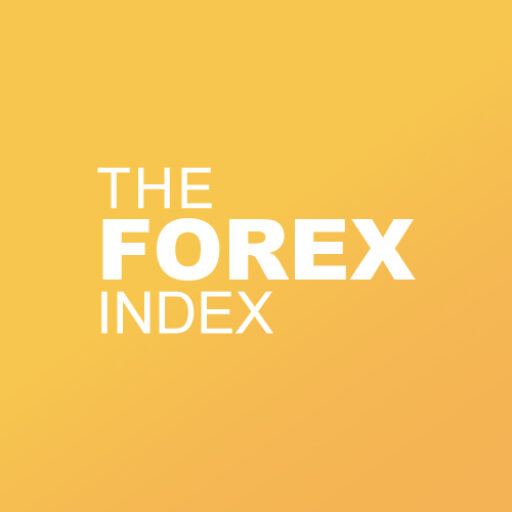In the ever-changing world of foreign exchange, understanding market trends is crucial. This week’s forex market review provides an in-depth analysis of the significant currency movements and expectations for the upcoming week. The spotlight of this review falls on USD, SEK, JPY, and MXN.
Dollar’s Resilience Stands Out Despite Fluctuations
The U.S. Dollar (USD) exhibited robust resilience throughout the week. Erasing the decline from the June Federal Open Market Committee (FOMC) meeting, the dollar showcased its strength. Fed Chair Powell’s continued reiteration of his hawkish stance, coupled with positive economic data, painted an optimistic picture for the US economy. Market experts suggest that more rate hikes may be on the horizon to bring inflation back to target.
Of note, the USDJPY approached 145, and the EURUSD broke below 1.09. However, the USD/CHF experienced a dip, dropping below the key 0.90 level. Sellers are eyeing a potential test of the 0.8900 mark, indicating a possible upcoming fluctuation in the pair’s performance.
Swedish Krona Drops: Record Lows Despite Rate Hikes
Investors have their eyes on the Swedish Krona (SEK), which took a significant hit despite the 25bps rate hikes from Riksbank. The SEK plummeted to record lows while the EURSEK rose to an all-time high of 11.85. The market’s reaction underscores concerns about the impact of further rate hikes on the property market.
Japanese Yen: Dovish Stance Amid Soft Inflation Data
The Japanese Yen (JPY) lost appeal due to soft inflation data from Japan, reinforcing the Bank of Japan’s (BoJ) dovish stance. However, the EUR/JPY found momentum, gaining support around 156.70 and rebounding towards the 157.50 area. This movement signals a possible weekly gain for the EUR/JPY pair.
Mexican Peso: US Soft PCE Data and Job Losses Impact Performance
The Mexican Peso (MXN) was affected by concerning jobs data, revealing a loss of 648,340 jobs in May – the worst performance for a May report since records began in 2005. Despite this, the USD/MXN held firm around the 17.1200 region, primarily due to softer-than-expected inflation data in the U.S. that weighed on the US Dollar.
Forex Market Expectations: What’s Coming Next?
In forex trading, having a finger on the pulse of market expectations is critical. Let’s look at what we can anticipate in the coming week.
USD/CHF: Potential Recovery on the Horizon
Despite the recent losses, the USD/CHF pair signals potential recovery. Fading selling pressure indicated by the Relative Strength Index (RSI) and positive three-day Rate of Change (RoC) indicate that the market could see a rebound.
EUR/JPY: Rate Hikes Expected Amid High Inflation
With high inflation concerns, the European Central Bank (ECB) is expected to implement rate hikes in July, September, and December. Conversely, the Bank of Japan maintains a dovish stance due to soft inflation data, suggesting a weakening Yen in the coming weeks.
USD/MXN: Rate Hikes and Unchanged Rates Affect Pair
The Federal Reserve is likely to raise rates in July, with odds currently sitting at 87%. In contrast, the Bank of Mexico (Banxico) is expected to keep rates unchanged, favoring the MXN and signaling potential further downside for the USD/M
Major Forex Market Trends and Outlook – June 30, 2023
Today, we’ll delve into the complexities and trends of the forex market as of June 30, 2023. As a dynamic field, forex trading demands a keen understanding of financial developments around the world. This blog will provide an in-depth look at the most significant forex pairs, including the USD/EUR, USD/CHF, EUR/JPY, and USD/MXN.
USD/EUR: Hawkish Fed and Resilient US Economy
The USD/EUR pair has experienced notable changes recently, driven by two major factors: a hawkish stance from Federal Reserve Chair Powell and strong US economic data. These influences have resulted in the US dollar erasing its decline from the June FOMC meeting. The pair broke below 1.09, with investors keeping a close eye on the preliminary June CPI due today.
For traders, this strong US economic data is indicative of a resilient economy that could warrant more rate hikes to bring inflation back to target. It’s crucial to stay informed on economic indicators and Federal Reserve communications to anticipate potential shifts in the USD/EUR pair.
USD/CHF: Testing Key Support Levels
The USD/CHF pair is currently navigating through key support levels, with the pair dropping below the crucial 0.90 level and extending losses. Sellers are eyeing a test of the 0.8900 mark, with the pair trading at 0.8947 at the time of writing.
Though the pair is leaning towards a downward bias, indicators such as the Relative Strength Index (RSI) and the three-day Rate of Change (RoC) suggest that selling pressure is fading. For forex traders, this hints at a potential recovery, making it a crucial time to monitor this pair closely.
EUR/JPY: Momentum Regained Amid Dovish BoJ
The EUR/JPY pair has regained momentum after finding support around 156.70 and rebounding towards the 157.50 area. Soft inflation data from Japan is reinforcing the Bank of Japan’s dovish stance, which is undermining the yen’s appeal.
German yields are retreating due to disappointing Eurozone HICP and mixed economic data from Germany. Despite these setbacks, the market is still pricing in rate hikes for July, September, and December. Traders should watch for the impact of these potential hikes and the ongoing inflation situation in the Eurozone.
USD/MXN: US Inflation Deceleration & Mexican Job Losses
The USD/MXN pair is holding steady near 17.1200, despite some concerning data from both countries. On the US side, softer-than-expected inflation data is slowing the US dollar’s climb. Simultaneously, job losses in Mexico are creating some instability in the Mexican peso.
Even with these challenges, the pair is trading almost flat. The market expects the Fed to raise rates in July, which could lead to changes in the USD/MXN pair. Meanwhile, the Bank of Mexico is expected to keep rates unchanged, a factor that traders should consider in their strategies.
As we navigate the ever-changing landscape of the forex market, staying informed and understanding key trends is paramount. By keeping a close eye on these major currency pairs and understanding the economic and political factors influencing them, traders can make informed decisions and seize potential opportunities in the market.
Please note that while I strive to provide the most accurate and up-to-date information, forex trading involves risk, and it’s crucial to conduct your own research before making any trading decisions.






